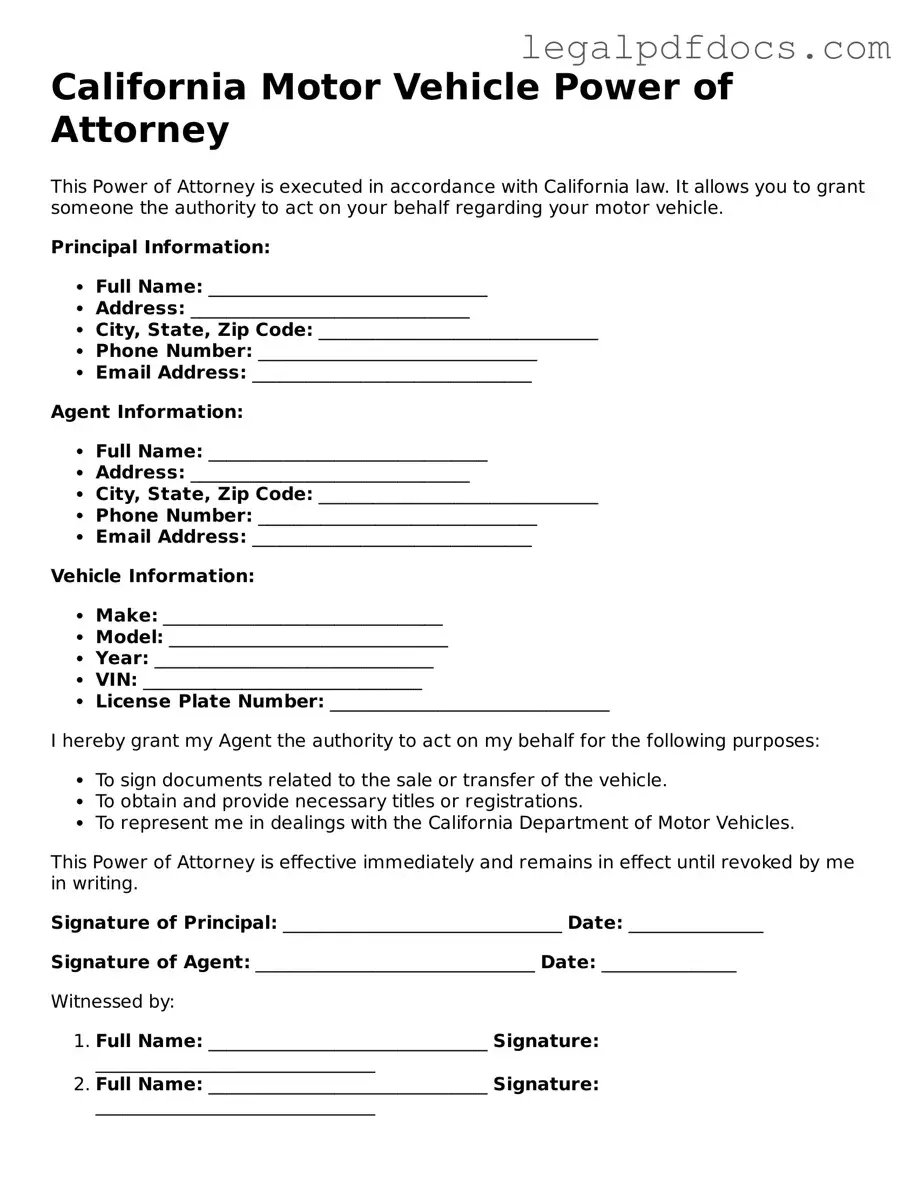Official Motor Vehicle Power of Attorney Form for California
The California Motor Vehicle Power of Attorney form allows an individual to designate another person to handle specific tasks related to their vehicle on their behalf. This legal document is essential for those who may be unable to manage their vehicle transactions due to various circumstances. To ensure your vehicle matters are handled smoothly, consider filling out the form by clicking the button below.
Open Motor Vehicle Power of Attorney Editor Here
